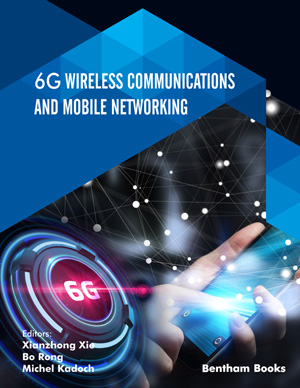About Book
Introduction
6G Wireless Communications and Mobile Networking introduces the key technologies behind 6G wireless communication and mobile networking to the reader. The book starts with a general vision of 6G technology, which includes the motivation that drives 6G research, the international organizations working on 6G standardization and recent progress in 6G research. Separate chapters on millimeter-wave and terahertz-wave technologies in 6G, the development of latest 6G antenna technology as well as related wireless communication applications are included in the contents. The book also provides details about the 6G network layer, such as self-organizing network driven by network slicing, software-defined networking and network function virtualization. Finally, it covers some popular research topics, including the challenges and solutions to massive 6G IoT networks, 6G cloud/edge computing and big data systems that may appear in the foreseeable future. </p> Key Features: </p> - Provides a complete introduction to 6G vision and technology </p> - Consists of both basic theories and frontier technologies </p> - Separate chapters on key topics such as 6G physical layers, millimeter wave and terahertz technology and advanced antenna arrays </p> - Covers future trends and applications such as intelligent management systems, 6G IoT networks, cloud/edge computing and big data applications </p> This focused reference will significantly enhance the knowledge of engineering students and apprentices involved in the field of telecommunications. Readers interested in cutting-edge wireless networking technologies will also benefit from the information provided.
Indexed In
Table of Contents
Preface
Page: i-ii (2)
Author: Xianzhong Xie, Bo Rong and Michel Kadoch
DOI: 10.2174/9781681087962121010001
List of Contributors
Page: iii-iii (1)
Author: Xianzhong Xie, Bo Rong and Michel Kadoch
DOI: 10.2174/9781681087962121010002
Explaining 6G Spectrum THz, mmWave, Sub 6, and Low-Band
Page: 1-22 (22)
Author: Xianzhong Xie*, Bo Rong and Michel Kadoch
DOI: 10.2174/9781681087962121010003
PDF Price: $30
Millimeter Wave Communication Technology
Page: 23-76 (54)
Author: Aart W. Kleyn, Wei Luo* and Bo Yin
DOI: 10.2174/9781681087962121010004
PDF Price: $30
Antenna Evolution for Massive MIMO
Page: 77-148 (72)
Author: Min Wang* and Brian D. Gerardot
DOI: 10.2174/9781681087962121010005
PDF Price: $30
Terahertz Technology Applied in Mobile Communications
Page: 149-188 (40)
Author: Anthony J. Vickers and Jia Ran*
DOI: 10.2174/9781681087962121010006
PDF Price: $30
Intelligent Network Slicing Management and Control for 6G Mobile Networks
Page: 189-207 (19)
Author: Fanqin Zhou* and Mohamed Cheriet
DOI: 10.2174/9781681087962121010007
PDF Price: $30
Applications and Implementations of 6G Internet of Things
Page: 208-223 (16)
Author: Tao Hong* and Fei Qi
DOI: 10.2174/9781681087962121010008
PDF Price: $30
Cloud/edge Computing and Big Data System with 6G
Page: 224-242 (19)
Author: Peng Yu* and Lei Shi
DOI: 10.2174/9781681087962121010009
PDF Price: $30
Subject Index
Page: 243-253 (11)
Author: Xianzhong Xie, Bo Rong and Michel Kadoch
DOI: 10.2174/9781681087962121010010


